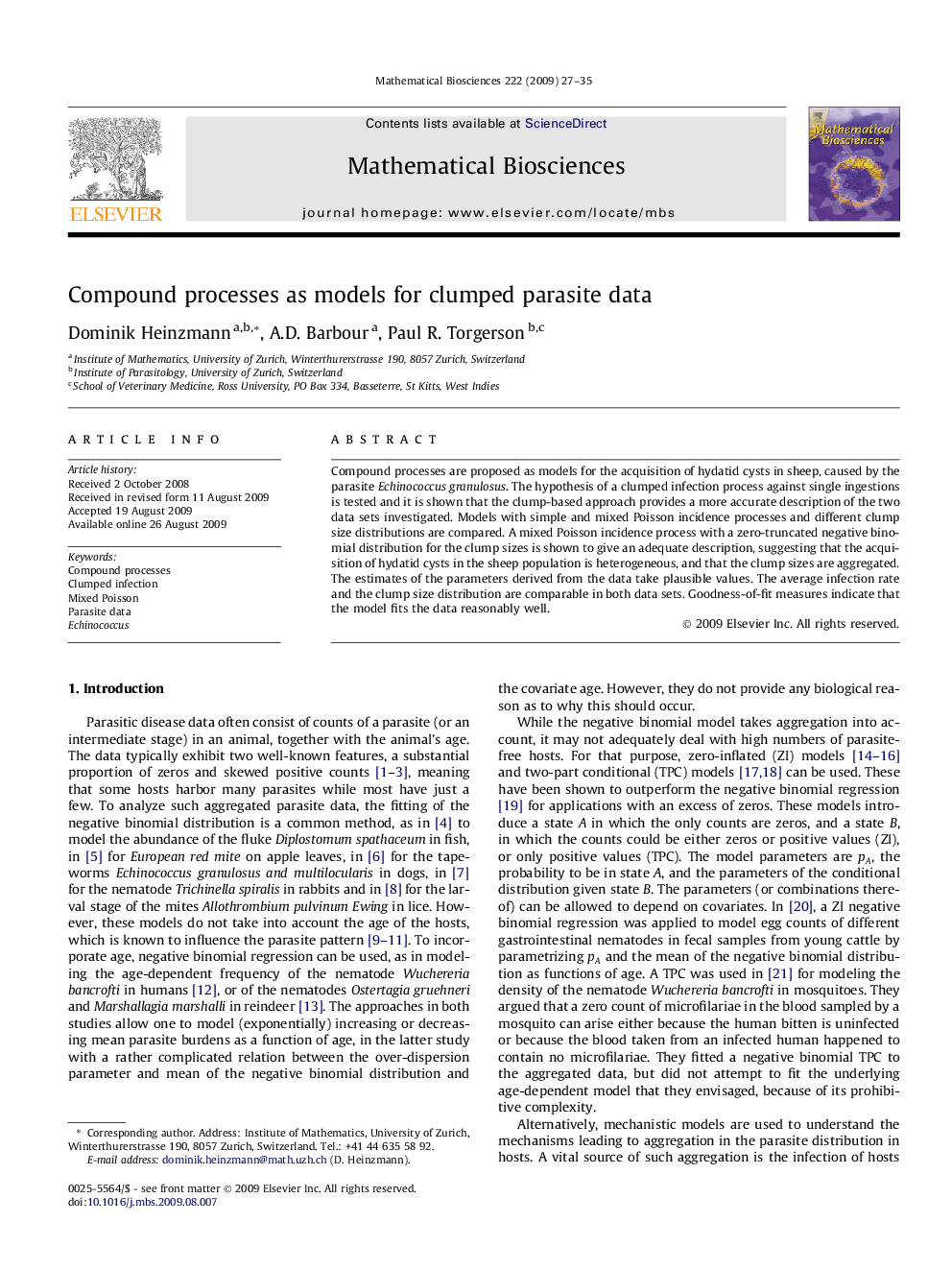| Article ID | Journal | Published Year | Pages | File Type |
|---|---|---|---|---|
| 4500665 | Mathematical Biosciences | 2009 | 9 Pages |
Abstract
Compound processes are proposed as models for the acquisition of hydatid cysts in sheep, caused by the parasite Echinococcus granulosus. The hypothesis of a clumped infection process against single ingestions is tested and it is shown that the clump-based approach provides a more accurate description of the two data sets investigated. Models with simple and mixed Poisson incidence processes and different clump size distributions are compared. A mixed Poisson incidence process with a zero-truncated negative binomial distribution for the clump sizes is shown to give an adequate description, suggesting that the acquisition of hydatid cysts in the sheep population is heterogeneous, and that the clump sizes are aggregated. The estimates of the parameters derived from the data take plausible values. The average infection rate and the clump size distribution are comparable in both data sets. Goodness-of-fit measures indicate that the model fits the data reasonably well.
Keywords
Related Topics
Life Sciences
Agricultural and Biological Sciences
Agricultural and Biological Sciences (General)
Authors
Dominik Heinzmann, A.D. Barbour, Paul R. Torgerson,
